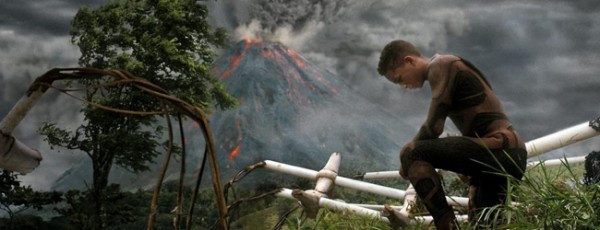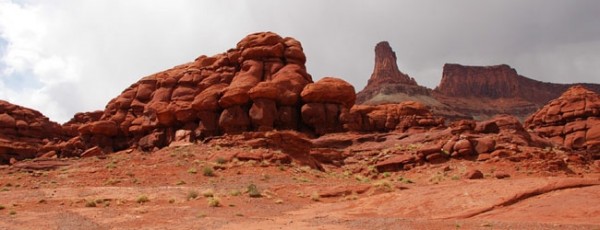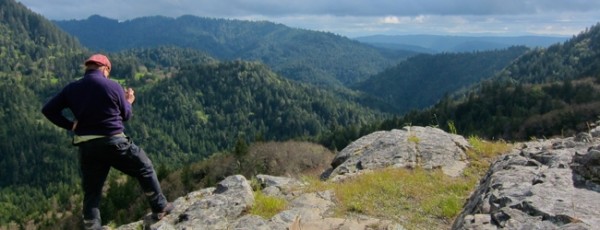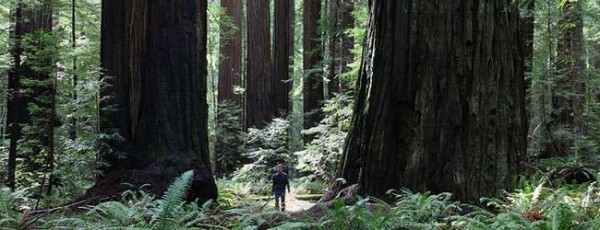Will Smith films sci-fi epic After Earth on location in US and Central America
Will Smith and director M Night Shyamalan travelled across the US and to Central America to film their sci-fi epic After Earth. Set a thousand years in the future, Smith and his real-life son Jaden star as father-and-son team Kitai and Cypher, who crash-land on a future Earth hostile to human life.
Sun Center Studios in Philadelphia was chosen as the film’s main base as it was local for Shyamalan and the production could take advantage of Pennsylvania’s generous 25% location filming incentive.
“Philadelphia also boasts the largest visual effects stage in the US,” offers Sharon Pinkenson, Executive Director of the Greater Philadelphia Film Office, which gave the production extensive logistical support locally.
“The Philadelphia Navy Yard has a 100,000-square-foot clear span and is 70 feet to the ceiling," Pinkenson adds: "Several other very large warehouses were used for filming, such as the former Budd facility in Philadelphia where trains once-upon-a-time had been assembled. This was used as a soundstage for After Earth.”
Supervising Location Manager Dow Griffith was brought on for the initial stages of pre-production to help the team narrow down options for the location filming elements. At this stage there wasn’t a completed script, but Griffith had Smith’s initial story premise.
The Philadelphia Navy Yard has a 100,000-square-foot clear span and is 70 feet to the ceiling. Several other very large warehouses were used for filming.
Sharon Pinkenson, Greater Philadelphia Film Office
“I sent John [Rusk, Shyamalan’s producer] and Night a 426-page document full of suggestions, which they found exciting,” Griffith recalls: “Shortly after that they hired me. When they brought on the production designer, Tom Sanders, we started working closely together and scouted Costa Rica, Appalachia, Pennsylvania and finally the North California Redwoods.”
Moab in Utah (above) was picked early on for scenes set on Nova Prime, the planet that humanity has made its new home in the story. Utah offers a 20% filming tax credit and the production was supported by the Utah Film Commission and the Moab to Monument Valley Film Commission.
Griffith's search for the Earth-set scenes began in Pennsylvania for the sake of convenience and then fanned out to Virginia, West Virginia and parts of North Carolina. The brief was to find places that appeared untouched by modern civilisation and which seemed to represent a realistic vision of Earth in a distant future where humanity has long-since left.
Humboldt Redwoods State Park in northern California was eventually chosen to portray the initial landscape of the inhospitable Earth where Kitai and Cypher crash-land. Filming here lasted only a few days, but special environmental measures were needed to safeguard a protected bird species native to the area.
“They had to limit the number of bodies in the actual grove during filming to keep the noise level down for the birds,” explains Cassandra Heseltine, Film Commissioner at Humboldt-Del Norte County Film Commission: “The parks and the production were able to come up with a number that worked for both entities.
“The hours that the production could be in the grove were kept to a certain amount of time as well. I believe it was 6am to 6pm to allow the birds to sleep during the off times.”
We had to repair about six kilometres of public roads that were almost un-passable and put in a three-quarter-mile-long pathway through the jungle for access.
Douglas Dresser, Location Manager
Costa Rica’s rainforests became the setting for the second half of the movie. Griffith already had experience scouting there for past features like Indiana Jones and the Kingdom of the Crystal Skull, while local producer Sergio Miranda of Costa Rica Production Services assisted with the shoot. Initial scouting was on horseback with machetes to break through the undergrowth and Shyamalan was impressed by what he saw.
“Filming in a jungle always presents a challenge. Housing was difficult in the remote areas,” says Location Manager Douglas Dresser, who was also Production Supervisor in Costa Rica: “Sergio Miranda and his team had experience with large-scale reality shows and they were great to work with. Manu Manohar, our local Location Manager and Scout, was great."
“We had to repair about six kilometres of public roads that were almost un-passable and put in a three-quarter-mile-long pathway through the jungle for access [to a waterfall location]," Dresser adds: "The owner of the property wanted to open up the area for tour groups so it was a win-win!”
“All the commissions were tremendously helpful, organised and did their best to provide everything requested,” Griffith considers of his time spent scouting Appalachia: “I felt like an honoured guest being shown around gorgeous locations each day. I was instantly spoiled and don’t know how I’ll be able to work solo again!”
(California stills courtesy of Dow Griffith; Moab still courtesy of Utah Film Commission; After Earth stills courtesy of Columbia Pictures)
Related Posts
- Filming on location in Costa Rica with producer Sara Rossi
- Location Manager Douglas Dresser: Filming with Tarantino and M Night Shyamalan
- Bacon films George Clooney in Mexico and pirates in Costa Rica for DNB Bank
- From DePalma to Spielberg: Filming with Location Manager Dow Griffith
- Costa Rica as a location for filming
- Smuggler films multi-coloured petal eruption on location in Costa Rica for Sony Bravia
- HBO TV adaptation of 70s sci-fi movie Westworld to film partly in Utah
- Spy game: Filming on location in Manila for The Bourne Legacy
Related posts:
Comments
Not Logged in
You must be logged in to post a comment




There are no comments